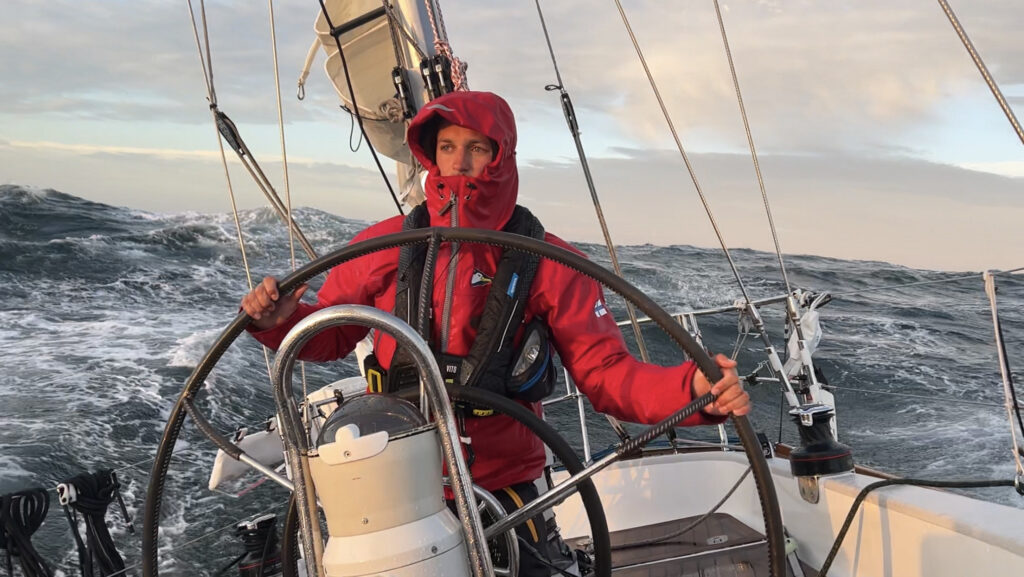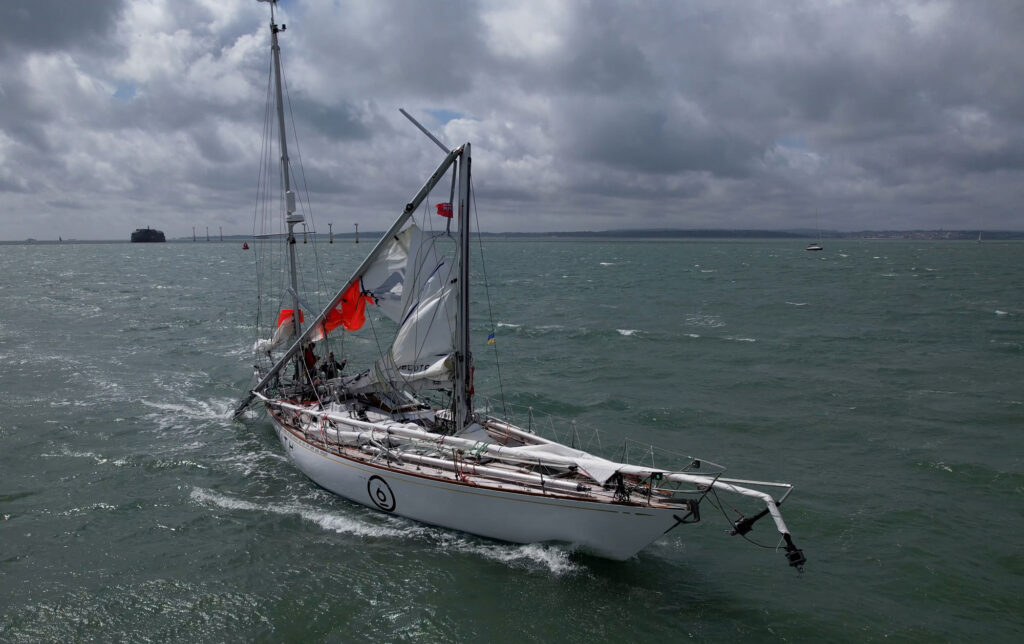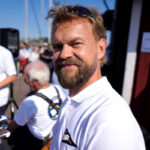Our plan for the summer was clear: to do proper shakedown sailing and test the boat so that everything would be ready for our big adventure. If something breaks, it’s better to happen now instead of somewhere in the Southern Ocean, which could be dangerous and potentially end our journey. So, we hoped for some heavy winds and rough seas. We got exactly that.
Shakedown #1: The Gotland Runt
The 2023 edition of the renowned sailing race Gotland Runt will be remembered as one of the toughest in history. The winds were more than 30 knots for over 24 hours, and many crews made the decision to withdraw from the race. Out of 174 boats, only 24 crossed the finish line. We were fourth in our class and received trophies for Best Youth Team, Best Finnish Team and Best Swan. Gotland Runt 2023 proved to be a true test for the boat and the crew.

Shakedown #2: The North Sea
From Gotland Runt, we continued to Kiel, where we spent a couple of days doing maintenance and sailing with WithSecure’s guests. After passing the Kiel Canal, we stopped shortly in Cuxhaven – or so we thought, as the engine went silent and we had to replace the starter motor, which took another day.
Finally, we were ready to continue towards England. And what does the weather forecast say? More than 30 knots from the southwest. Ouch. We considered taking shelter from some port in the Netherlands but decided to face the challenge and do another shakedown sailing across the North Sea. So: big sails down, small sails up, and dry suits on. Again, the boat and the crew performed well, and we reached the east coast of England in two days. A day later, we arrived in Gosport. All good.

Shakedown #3: The Fastnet Race
Rolex Fastnet Race is a legendary race that is probably on every offshore sailor’s bucket list. It starts from the Isle of Wight, goes around the Fastnet lighthouse on the south coast of Ireland and finishes in Cherbourg. This year was the 50th edition of the race, and we had very high expectations for the race itself and also the festives at the finish line in France.
The Fastnet Race is known to offer serious challenges for the sailors, and this year was no exception. In gale-force winds and big seas, 430 boats went beating upwinds through the Solent, and the next morning, 86 had already retired due to the furious weather. Unfortunately, Galiana WithSecure was one of them.
Late on the first evening of the race, I was off duty, trying to stay in my bunk and get some rest, as the boat slammed and fought its way through the big waves. I was not tired enough to sleep. In these kinds of conditions, you have to be so exhausted that you just pass out. There came another big wave and bang – only, this one was very different.
“All hands on deck! The mast came down!”
What?! For real?! Please no! In disbelief, I rushed out of my bunk and started to gear up.
Was anyone hurt? Is there a risk of the remains of the mast hitting the hull and causing a hole? Is our journey around the world ending before it even begins?
We took out the hydraulic wire cutters and grinders in case we needed to cut the mast off. Luckily, those were not needed.
After a couple of minutes, I was on deck. It was pitch dark, and the boat was swaying wildly in the waves.
It was a very serious situation, but luckily not as bad as it could have been. No one was hurt in the accident. The mast had broken about 5 meters above the deck, fell directly to the side and was hanging from the ropes and electrical wires. If we just stayed calm and thought carefully before every move so that we would not escalate things, there was a good chance that we could salvage the majority of the remains. Also, we were far enough away from the shore so we had room to drift and just concentrate on the boat.
I went to the foredeck, and we started to lift the sails and rigging from the sea. They are not too light to start with, and now being half submerged, it took some serious effort from the whole team to get them on the deck. Little by little, we managed to get them up. We also managed to pull the top of the broken mast next to the boat and secure it there. We decided to wait until the break of dawn before approaching the coast. Three of the least seasick crew members stayed on deck, and the rest went below. Exhausted, I collapsed on the floor with all my wet gear on, only to realise ten minutes later that I was freezing, as all my energy had been consumed. I took off my gear and went into my bunk, and this time, I passed out.
Once back ashore, we examined the damage, and luckily, we could utilise the most complex parts of the mast and only replace the middle section, shrouds and other damaged parts. Still, it was a big task, and it took a whole month to get all the parts and put them together. Luckily, Gosport is one of the best places in the world to get this kind of work done, and we will be ready to start the Ocean Globe Race on September 10.




